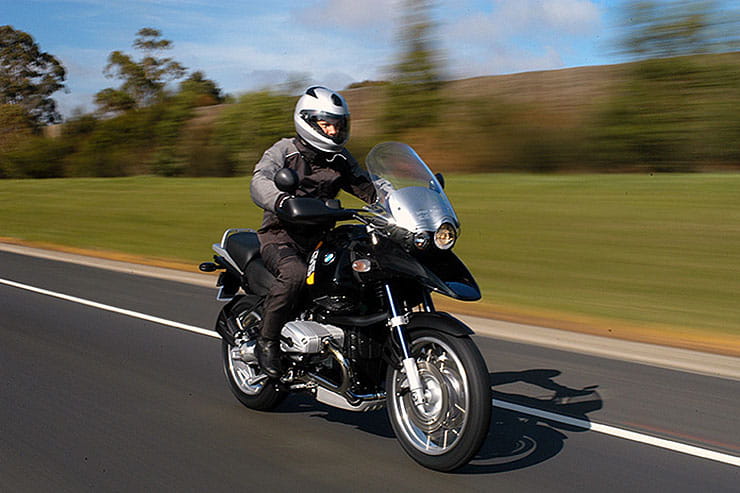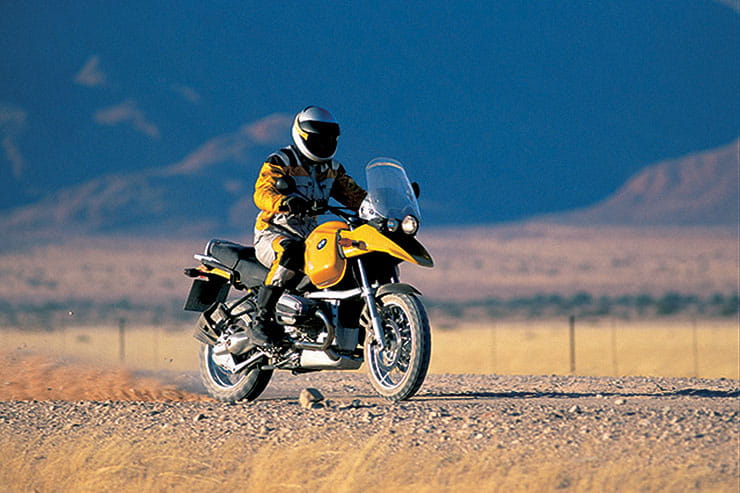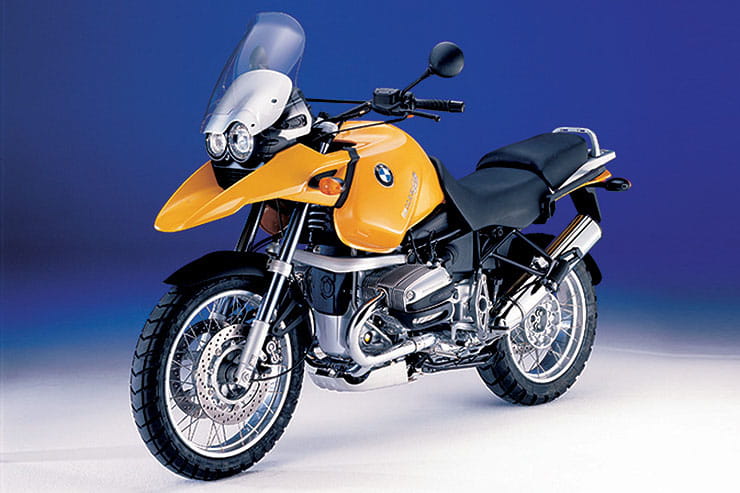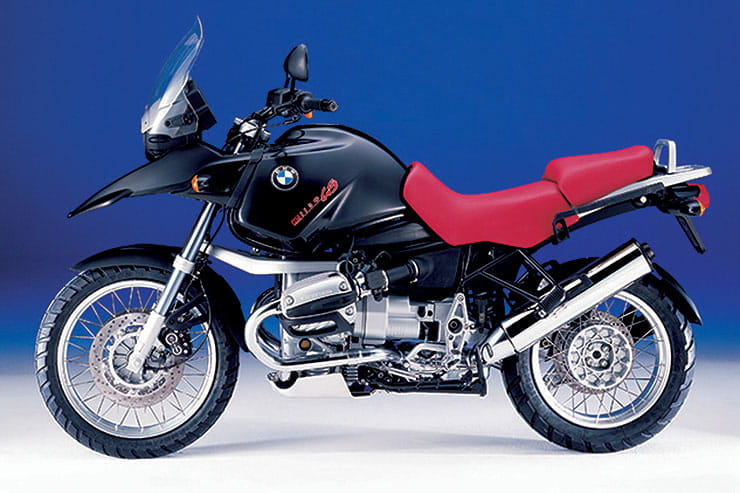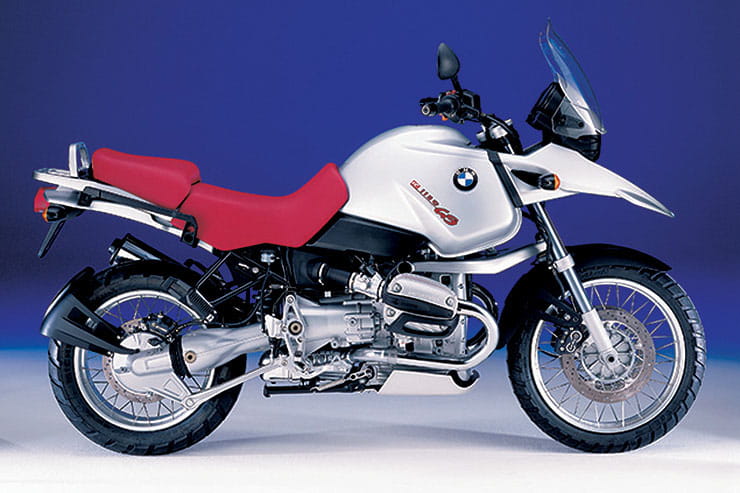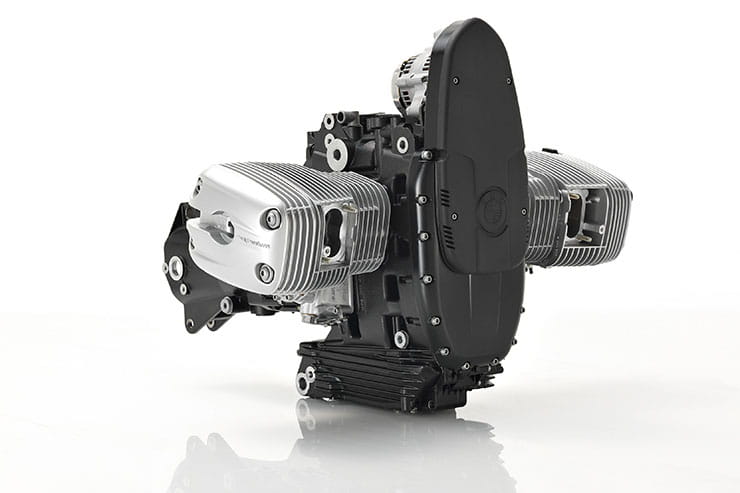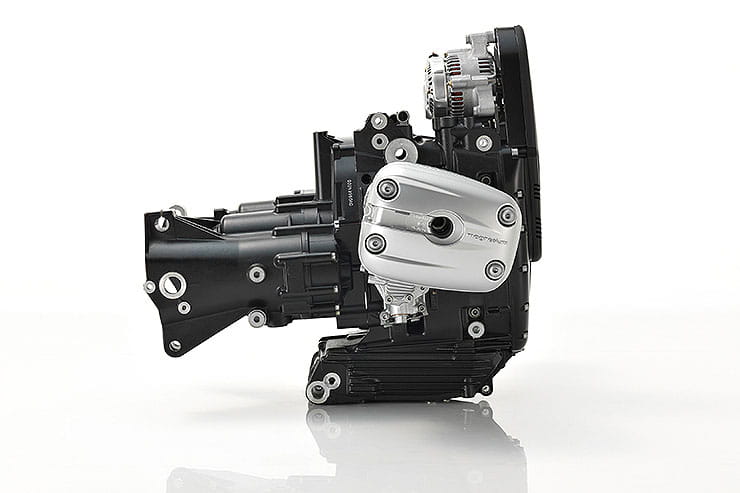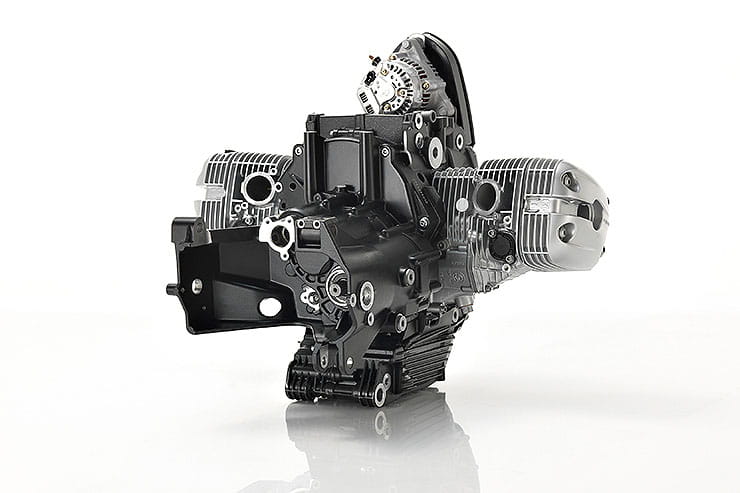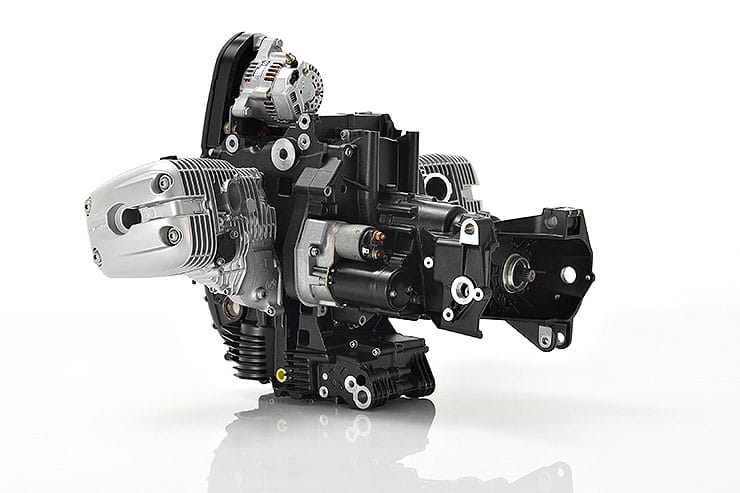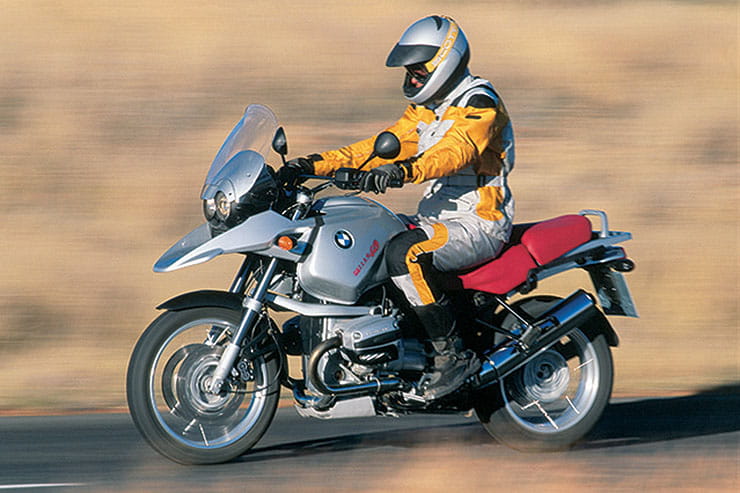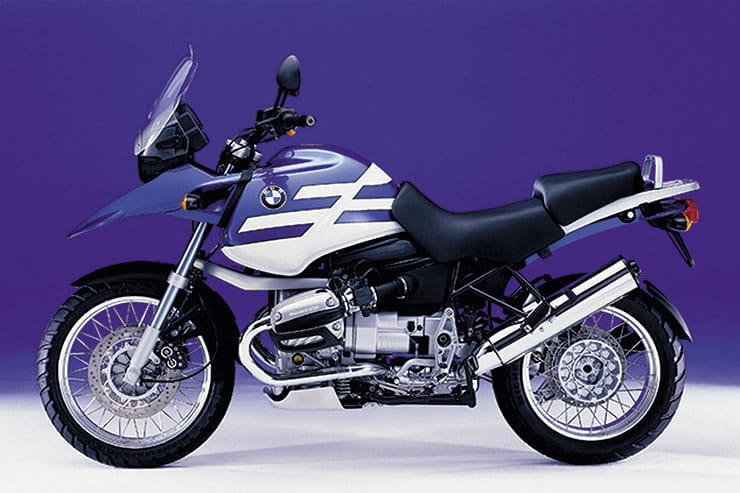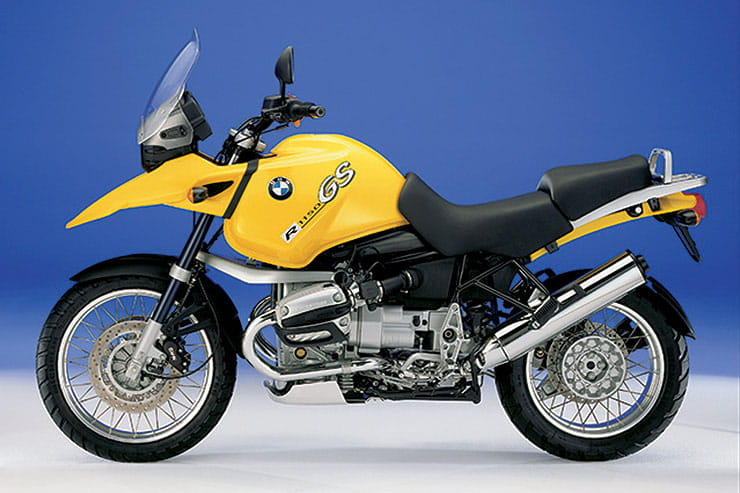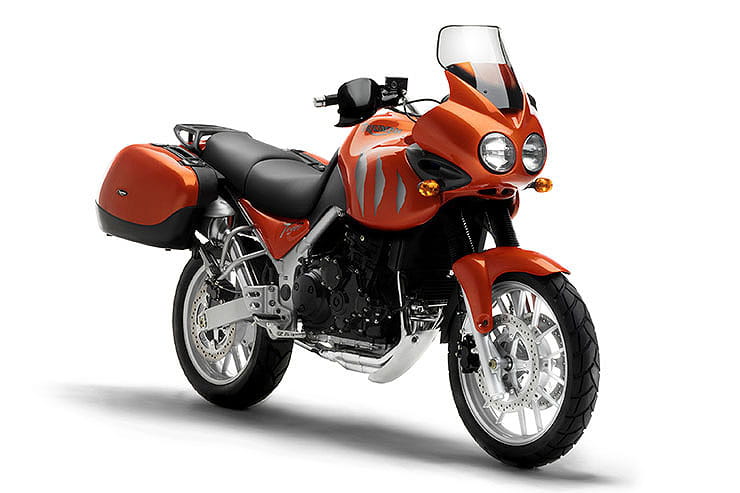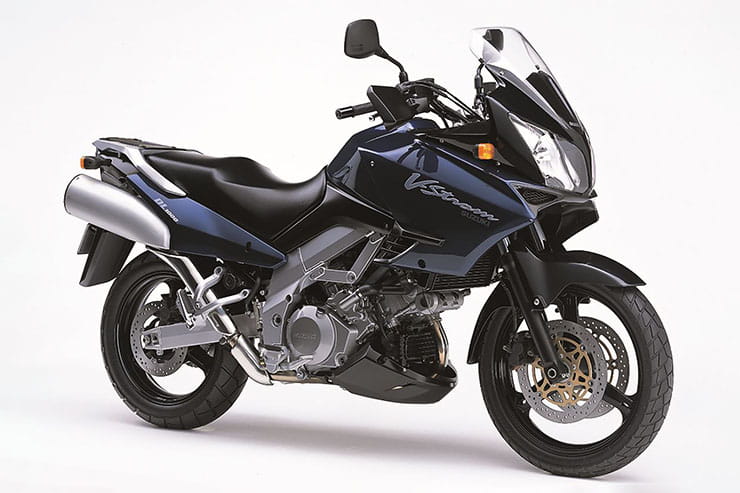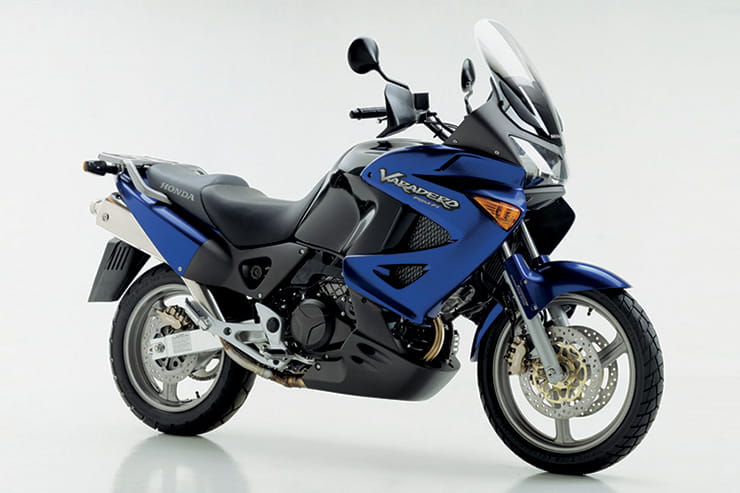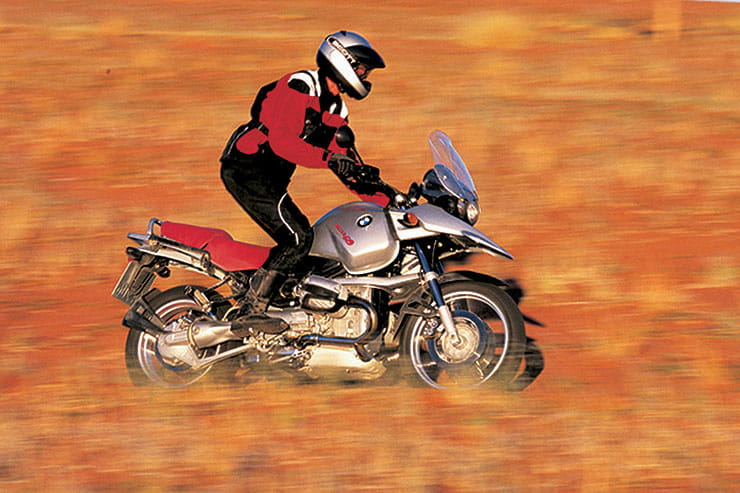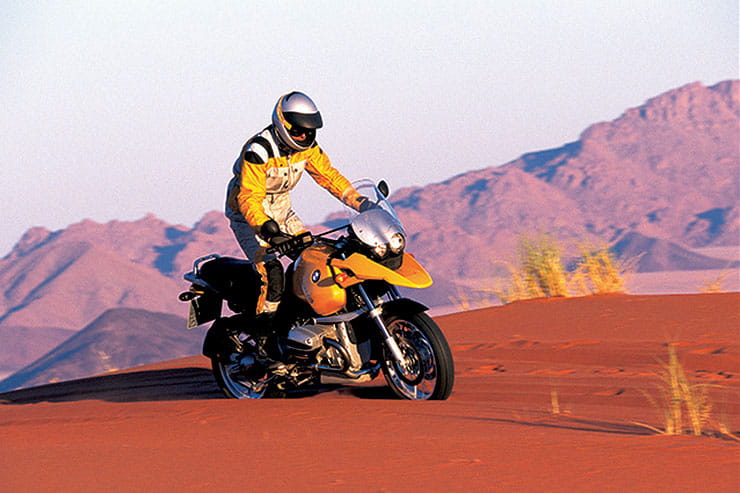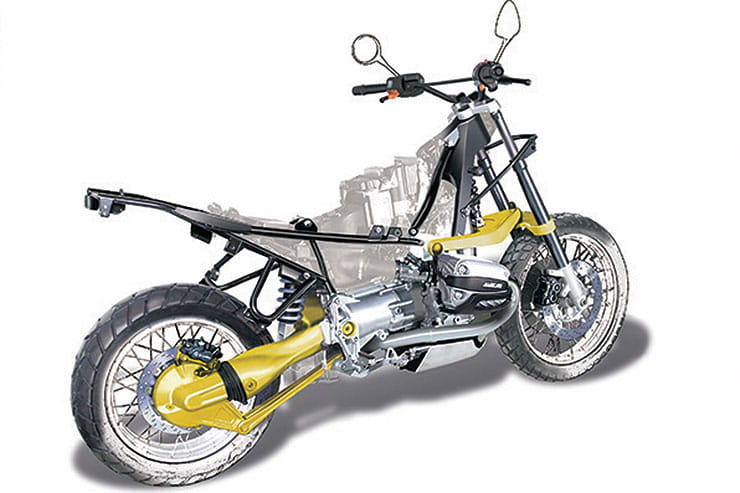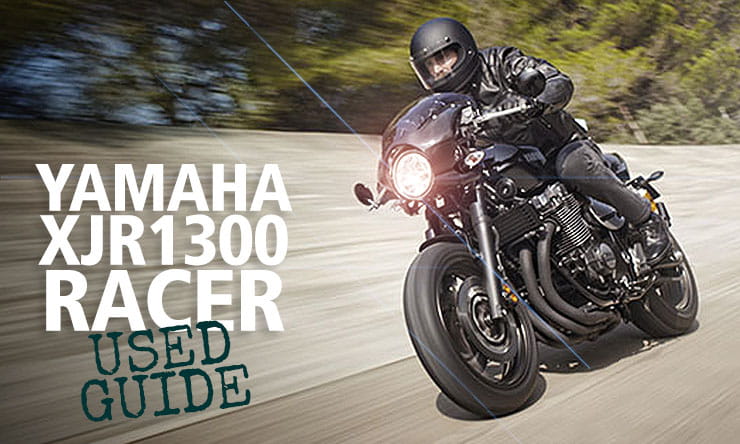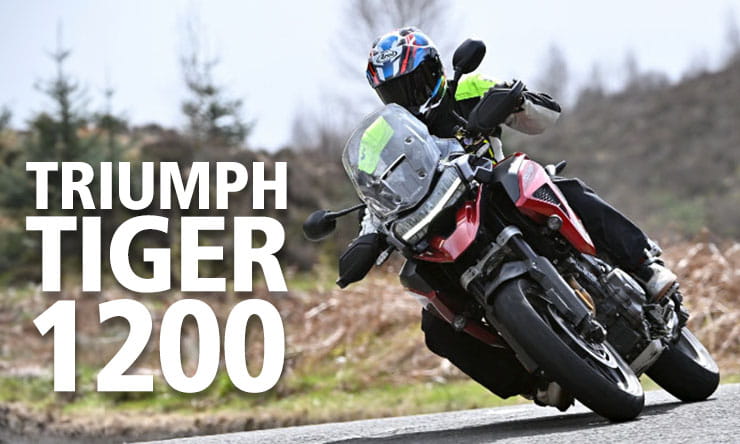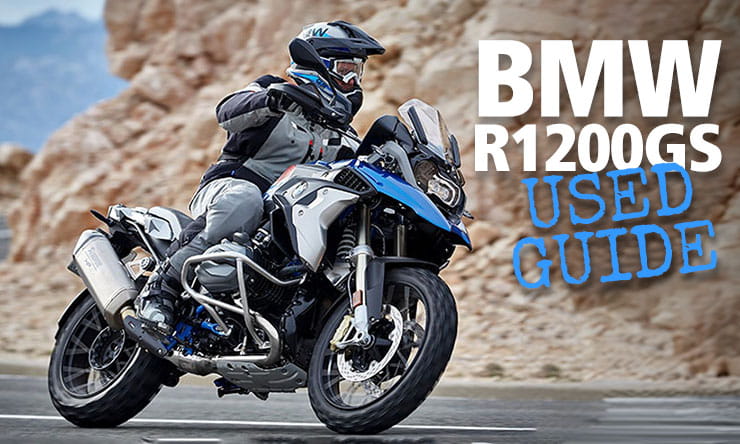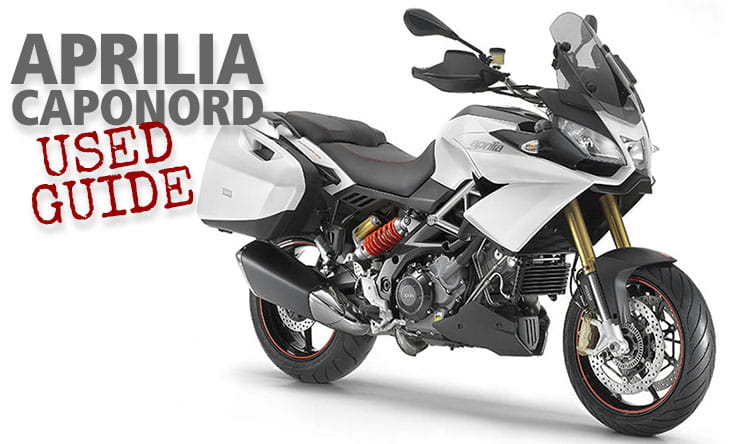Price: £2000-£4500 | Power: 85bhp | Weight: 249kg | Overall BikeSocial Rating: 4/5
There is no need to introduce the GS to you, everyone knows what BMW’s ground-breaking adventure bike is and how it has changed the two-wheeled world, so instead let’s just talk about the 2000-2003 generation. Replacing the R1100GS, the R1150GS added a bit more engine capacity (and a sixth gear) but the rest of the bike was pretty much unchanged aside from updates to the ABS system and general fettling of the chassis. More an evolution than a revolution (that happened in 2004 with the R1200GS), the R1150GS is a belt-and-braces kind of bike that is pleasingly analogue (no CAN-bus here) and all the better for it. Rugged and reliable, it makes for a brilliant used bike that although a bit raw and unrefined in comparison to the latest models, is still a GS at heart and that’s all that matters.
BMW R1150GS (2000-2003) Price
The GS cost just £7995 in 2000 – how things change, a 2023 R1250GS starts at £14,000 but realistically it will be closer to £20,000 once you have finished with the optional extras... In the used market the R1150GS isn’t as sought after as the Adventure model (which is what Charley and Ewan used...) but prices are still quite high for an old bike. Although there are a few in dealers, generally a dealer won’t want to stock such an old bike and so you are looking at a private sale. Hit the usual online selling points and you can find a GS for as little as £2000 but it will have covered a fairly big mileage (over 60,000) so you are probably better off aiming to spend in the £3000-£4000 region to get a bike with lower than 40,000 miles on its clocks. There are a few R1150GS models advertised for a touch over £4000 but they have full luggage and 30,000-area mileages. Realistically, you can get a good one for £3500, which makes it decent if not outstanding value.
Pros & Cons
- Solid reliability
- Do-it-all nature
- Comfortable riding position
- Things will start to wear out
- It is quite heavy and tall
- The handling isn’t as good as modern adventure bikes
Engine and Performance
The older R1100 engine made a claimed 80bhp, so initially it sounds disappointing that the R1150 with its 46cc capacity hike makes just 5bhp more and only 1Nm more torque (97Nm). However that’s not the whole story. As well as upping its capacity, which does make a big difference to the bike’s mid-range if not its peak power and torque figures, BMW added a six-speed gearbox to the R1150, something the R1100GS was crying out for.
Less revvy at cruising speeds thanks to its new ‘overdrive gear’ the R1150GS is much happier on modern roads than the R1100GS and that is a big factor when buying a used one nowadays. That said, it is still far from refined and as well as an old-school ‘boxer lurch’ when you blip the throttle, the R1150GS also has a fairly agricultural gearbox action. Is this to the bike’s detriment? Not really, it’s an older boxer and the vibes (that aren’t too intrusive), clunky gearbox (they all do that) and slightly muted performance all combine to deliver an engaging riding experience. And one that is also unlikely to let you down.
Thanks to its old-school nature, the GS’s engine is very reliable with bikes that have seen over 70,000 miles common. Things tend to wear out on a GS rather than break as such and that means a test-ride is even more vital than on a newer bike. So what to look for?
The first, and most important, point is the clutch. As it is an old boxer motor, to change the clutch you need to split the bike in half and that’s a massive job. Always feel for clutch slip and if in doubt, walk away as you are risking a bill of about £800-£1000 from a workshop to replace the clutch. Although they should be checked every 6000 miles, adjusting the valve-clearances isn’t a huge drama on a GS. Thanks to its easily-accessed heads and a ‘nut and screw’ adjustment system, a set of feeler gauges and about an hour is all you need to check them, which is good news. Always inspect the state of the starter motor (lefthand side of the engine) as they wear out (replacements are about £100) and also look around the plastic cover (if you can remove it, do) on the front of the engine as water can collect there, leading to rust forming beneath. As on any shaft-drive system, listen for grumbling bearings or signs of oil leaks and ideally, once you own the bike, swap the oil within. There are occasional sensor failures here and there as well as the potential of a leaking clutch slave cylinder and fuel lines requiring replacing but generally, old-school equals solidly built and that’s great news for a used bike buyer.
BMW R1150GS (2000-2003) Handling & Suspension
The R1150GS’s chassis was upgraded (and its styling also changed) when compared to the R1100GS through a lighter Telelever system and shorter swingarm but they don’t make a huge difference to the bike’s handling. Older GS models aren’t as impressive in the bends as the R1200GS-onwards generations but you can make them handle better through quality modern tyres and also upgraded suspension. If a used GS is still on its OE shocks (front and back remember, it’s a Telelever) assume they will probably need changing fairly soon (always check the preload adjuster turns and isn’t seized) – which isn’t a bad thing.
New shocks are about £400 each and alongside a set of fresh rubber, really enhance the GS’s road holding. Always be a bit careful of the Telelever system, which does need servicing every now and then with its ball joints replaced (which requires a special BMW tool..). Get the front of the bike in the air and feel for play or any roughness in the system. A Telelever service by a BMW specialist (it’s not an easy task to do yourself) is about £300. And always check a GS’s spoke wheels (the R1150GS was spoke only, not cast) for not only damaged spokes but also rust and any dings in the wheel rim.
Comfort & Economy
The GS is a comfortable bike and great for covering distance on thanks to an upright riding position and very forgiving seat. While the Adventure has a huge 30-litre tank, the base bike is hardly left lacking in capacity with its 22-litre tank good for approaching 300 miles at a steady 50mpg. Some owners manage to squeeze even better economy out of it! If you want to make it even more comfortable for covering miles, there are lots of accessories out there...
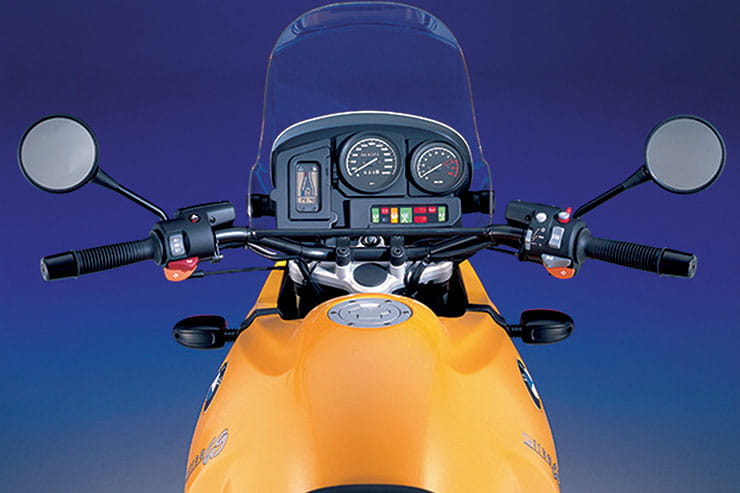
BMW R1150GS (2000-2003) Equipment
The GS was quite limited in its equipment levels and really you had the option of ABS and that’s about it. Always be a bit wary of ABS-equipped used bikes as if the system fails, and it does, the repair bill is quite high. To be honest it isn’t a great system and there is no real disadvantage to getting a non-ABS bike, in some ways it is a better buy.
When buying used, luggage is a good thing to see on a bike as it is quite costly to get fitted and so are heated grips and maybe a bigger screen. A few owners fit a new exhaust system to help release some mid-range, which it will do, but generally around 90% of the GS’s are still on their stock exhaust. Really, unlike modern GS models, there isn’t much else to look for in terms of extras and standard (with crash protection maybe) is best.
BMW R1150GS (2000-2003) Rivals
The R1150GS appeals to riders looking to ride them whatever the weather, generally on a commute. They are workhorses and that’s why their rugged build quality and easy home maintenance is so important.
Triumph Tiger 955i (2001-2006) | Approx Price: £1500-£3000
Power/Torque: 104bhp/67lb-ft | Weight: 240kg
Suzuki V-Strom 1000 (2002-2008) | Approx Price: £1500-£3000
Power/Torque: 105bhp/68lb-ft | Weight: 238kg
Honda Varadero 1000 (2001-2010) | Approx Price: £1300-£3000
Power/Torque: 93bhp/72lb-ft | Weight: 241kg
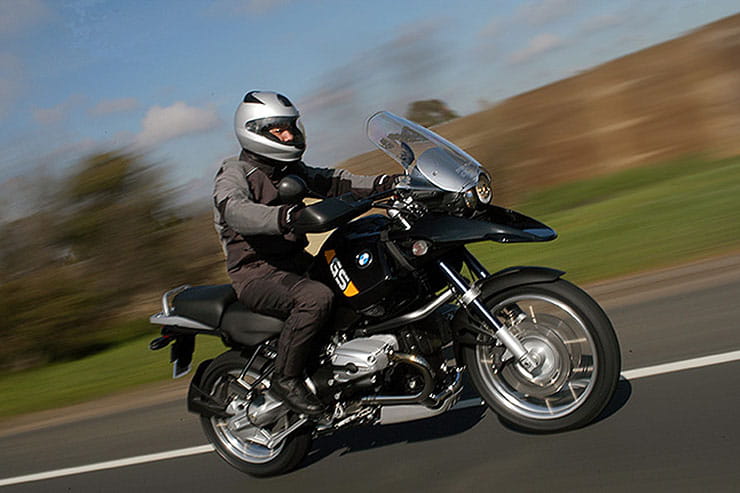
BMW R1150GS (2000-2003) Verdict
The BMW R1150GS is the best of the ‘old-school’ GS models. Reliable and solidly built, although the Adventure is more sought after, there is nothing at all wrong with the standard version. Simple to maintain yourself and easy to find parts for, it is a cheap bike that makes for a great commuter or daily hack that is also more than happy to tour or adventure ride. Some faults can be costly to fix but generally you are looking at bolt-off/bolt-on jobs when things wear out and that makes it quite a safe used buy. As a first step on the GS ownership ladder, the R1150GS makes perfect sense – the only issue is that once sampled you will almost certainly be hooked by this fantastic motorcycle and that’s when it can get costly as the latest models are eye-wateringly expensive...
If you’d like to chat about this article or anything else biking related, join us and thousands of other riders at the Bennetts BikeSocial Facebook page.
BMW R1150GS (2000-2003) - Technical Specification
|
Original price
|
£7995
|
|
Current price range
|
£2000-£4500
|
|
Capacity
|
1130cc
|
|
Bore x Stroke
|
101mm x 70.5mm
|
|
Engine layout
|
Boxer twin
|
|
Engine details
|
Air-cooled, SOHC, 4v
|
|
Power
|
85bhp (62.5kW) @ 6750rpm
|
|
Torque
|
71lb-ft (98Nm) @ 5250rpm
|
|
Top speed
|
130mph
|
|
Transmission
|
6-speed, shaft final drive
|
|
Average fuel consumption
|
50mpg
|
|
Tank size
|
22 litres
|
|
Max range to empty (theoretical)
|
275 miles
|
|
Reserve capacity
|
40 miles
|
|
Rider aids
|
ABS optional
|
|
Frame
|
Three-section
|
|
Front suspension
|
BMW Telelever
|
|
Front suspension adjustment
|
Adjustable preload
|
|
Rear suspension
|
Monoshock
|
|
Rear suspension adjustment
|
Adjustable preload and rebound damping
|
|
Front brake
|
2 x 305mm discs, four-piston calipers.
|
|
Rear brake
|
276mm disc, two-piston caliper.
|
|
Front tyre
|
110/80 – R19
|
|
Rear tyre
|
150/70 – R17
|
|
Rake/Trail
|
26.2°/ 121mm
|
|
Dimensions (LxWxH)
|
2180mm x 980mm x 1435mm
|
|
Wheelbase
|
1501mm
|
|
Ground clearance
|
n/a
|
|
Seat height
|
850mm
|
|
Kerb weight
|
249Kg Wet
|
Looking for motorcycle insurance? Get a quote for this motorbike with Bennetts bike insurance



